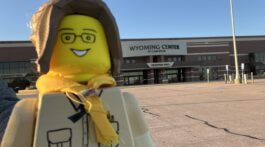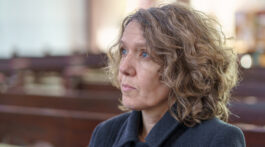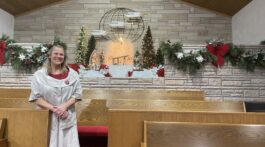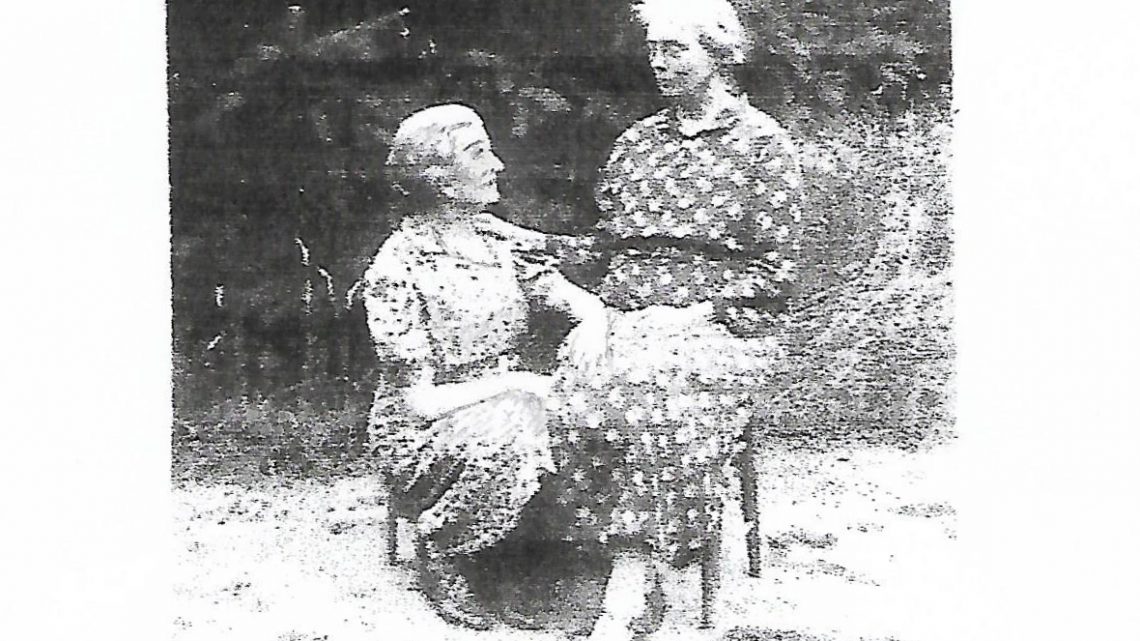Susan and Mary Haskell were born in central Iowa in the middle 1800’s to Lafayette Haskell, a farmer, and his wife, Margaret. One day a neighbor lady invited the girls and their two brothers to Sabbath School. For the girls this resulted in a lifetime commitment to the mission of the Seventh-day Adventist Church.
As the girls reached their teens and grew more entrenched in keeping the Sabbath and not eating pork, among other things, Margaret Haskell began complaining and finally decided that their church-going behaviors had to cease. For months thereafter she verbally and physically abused the girls when they talked about the church. When friends came to pick them up, Margaret put an end to that. However, the girls often walked five miles in order to attend church. One Friday Margaret seized their church dresses and threw them outside in the dirt forcing them to wear their weekly attire to church. Many Saturdays she gave the girls orders to do household cleaning tasks. Although the girls begged her to save the tasks until the next day when they would gladly do them, she would shout at them and hit them, so they would have to flee the house sometimes spending Sabbath outside in the orchard.
A miraculous escape
Susan went to live with a family in nearby Garwin where she learned hat making which eventually led to her managing a local hat shop. She often returned home on the weekends, but the abuse became too much for the girls resulting in the need for a plan. Susan made contact with S.A. Hill, a colporteur leader in Iowa, who invited them to sell books. One morning a church friend drove up to the house with his buggy, and the girls with the help of their younger brother, Robert, loaded their trunk and other things aboard. Off they went just as dark storm clouds gathered and raindrops started falling.
The girls prayed for safety as the buggy pulled away from their home with their mother screaming to the storm praying that they would not reach their destination. The storm descended in a fury with howling winds and a fierce downpour. However, when they reached the train station, the stationmaster was shocked to see the horse, buggy, and its contents completely dry with everything outside absolutely soaked.
Finally reaching the home of Elder Hill, the girls were met with kindness from Mrs. Hill. That night they received the books they would sell, and with basically no training, they went out the next day to sell with Susan going one way and Mary the other. When they met for lunch how surprised they were to find that they each had made some sales. But, this was just the beginning for each of them for they became highly successful colporteurs working in the state of Iowa for about five years.
Calling to Foreign Missions
As they worked selling truth-filled books and leading others to Christ, they both became convicted of the need for foreign missionaries. The newly organized Seventh-day Adventist church under the leadership of James and Ellen White had elected their first president, and the leaders called for young men and women to devote their lives to spread the Adventist message to Europe and beyond.
Eager to comply with this challenge, Susan was the first to resign from canvassing and enter nurses’ training at the Iowa Sanitarium. Mary soon followed, and it was there that they both became friends with two remarkable young men. Susan married first to Edwin Wilbur in 1902 with Mary marrying Clarence Rentfro in 1903.
Susan and Edwin left right after their wedding and sailed to China. They began working in Hong Kong, then moved on to Canton. Innumerable difficulties faced the young couple. Mobs often cornered white people labeling them as foreign devils and torturing them with methodical dismemberment until death occurred.
The Wilburs narrowly escaped this fate one time. Edwin worked day and night until he became quite worn out. The couple and their children moved to Pakhoi where Edwin suffered a malaria attack which cost him his life. Susan stayed on in Canton for three years visiting homes with sick family members doing her best to help them recover. Soon she acquired tuberculosis, so she and the children returned to the United States. When she recovered her health she worked among the Chinese people in Oregon and San Francisco.
working in Portugal
Mary and Clarence did not leave immediately after their wedding because Clarence worked for a while doing evangelism in Iowa. A baby named Charles was born to them at the home of Clarence’s parents. Shortly after his birth they received a call to work in Spain. However, due to a sudden change of plans they ended up in Portugal as the first Seventh-day Adventist missionaries to land there. They immediately found a Portuguese teacher to help them learn the language. Starvation stalked them the first year because they soon used up their personal funds, and no salary arrived for months. The believers at home were not used to giving funds for overseas missions.
When this problem was rectified, they passed out literature everywhere to anyone while Mary donated nursing services free of charge to all she found that needed help. Royalty soon heard of her work among the people, and one day a coach pulled up to the home of the Rentfros, and an elegantly clad coachmen presented Mary with a written invitation to the palace to see a sick member of the royal family. Thus Mary began providing nursing and midwife services to the royal residents at the palace.
However, that ended when one day someone killed the king throwing the country into chaos. This unrest flowed into the churches, and when Clarence was holding a meeting, a group of rebellious young men entered the meeting hall and seated themselves. All were quiet at first when suddenly the men jumped up out of their seats and began throwing people down and beating them. Mary saved the day by threatening the leader of the ruffians with her long, steel hatpin. The police apprehended the whole group of rebels.
More miracles
Mary and Clarence had three children, and one day the children were playing behind the house by a large stone fence that surrounded the yard. Suddenly Mary ran from the house shouting the names of the children calling them to come to her immediately. They obeyed and ran to her just as an earthquake shook the earth causing the stone wall to fall right on the spot where the children had been playing. How they praised the Lord for delivering them from injury and death.
After 13 years working in Portugal, the Rentfros moved to Brazil where they worked for several years before Clarence became seriously ill from malaria. They were forced to return home to the United States where he could receive treatment. After recovering he pastored churches in three states and retired in California. At this time, Mary at age 61, took the exam to receive an RN license and worked many more years in the medical office of her son-in-law. She lived to the age of 97 enjoying her extended family. During her lifetime she assisted in delivering approximately 1,000 babies.
Just picture the neighbor who invited the Haskell children to Sabbath School as she meets Mary and Susan in heaven and hears about their dedicated lives. How surprised she will be to hear the results of inviting her neighbor children to Sabbath School. Her kindness resulted in the saving of hundreds of souls.
For more information about the lives of these two sisters and their amazing experiences serving their Lord, please read Susan Haskell, Missionary by Ivy R. Doherty published by the Review and Herald Publishing Association in 1938. Also, From Farm Girl to Missionary, the Life of Mary Haskell Rentfro by Jean M. Anderson published by Teach Services, Inc. in 2019.
Jean M. Anderson lives in Ooltewah, Tennessee, United States.










